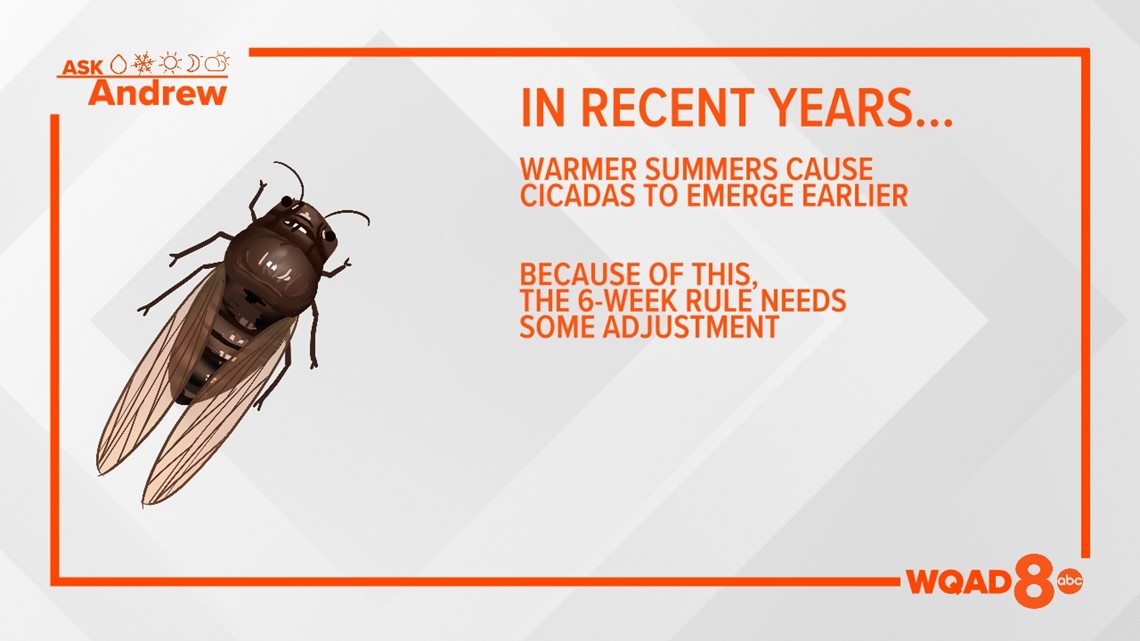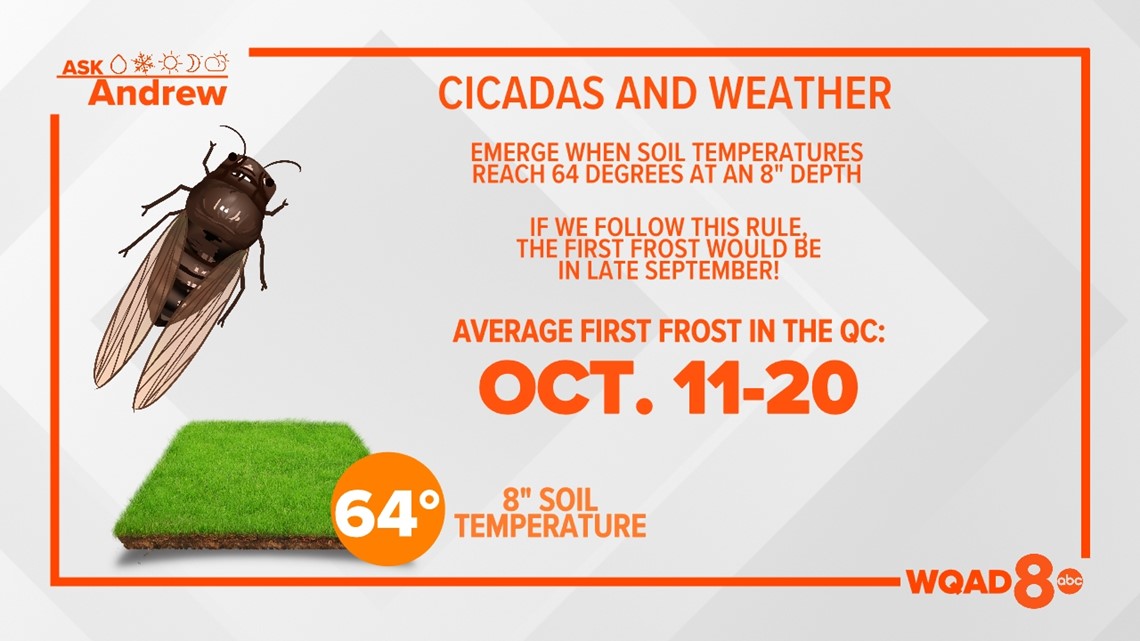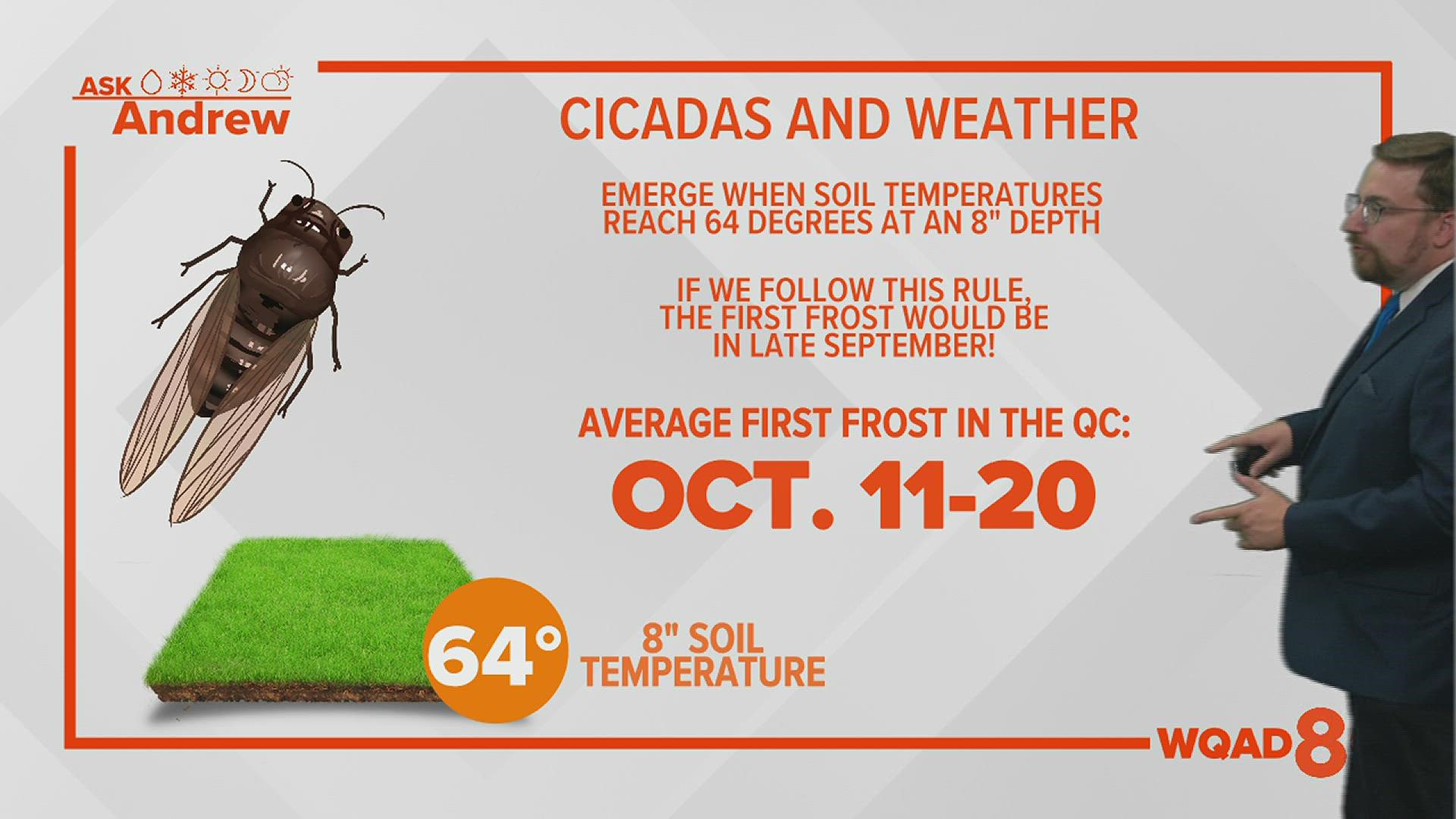MOLINE, Ill. — The cicada, the loudest insect on Earth (Guinness World Records certified), has made its grand return to the Quad Cities, just as it typically does in August.
Popular weather folklore says that upon the return of the cicadas, one can expect the first frost within the next six weeks. It's true that, come Sept. 1, we will technically be entering the fall season - meteorological fall that is. It sounds plausible, right?
When the soil temperature at a depth of 8 feet below the surface reaches a temperature of 64 degrees or warmer, the cicadas quickly emerge from their slumber. Males emerge and quickly find a spot on a tree to begin calling the females. Their call is unmistakable and can be heard for long distances, especially when they are in groups.
While they may be efficient sound producers, can they actually help us predict the first frosty morning? Not really. Here's why:


While this may have been the case many, many decades ago, the same doesn't really hold true today. Temperatures throughout the spring season continue to warm. Even during the summer months, the Quad Cities have seen a 1.2-degree increase in the average temperature since the 1970s.
These warmer temperatures correspond with warmer soil temperatures and often lead to a slightly earlier emergence of cicadas each year.


If we followed that rule this year, our first frost would be in mid-to-late September, much earlier than the average first frost date of Oct. 11-20.


So, it's safe to say the six-week rule definitely needs some adjusting. The last five years have seen first frost dates ranging from Oct. 4 to Nov. 11.
Have a question you would like me to answer for an upcoming Ask Andrew segment? Submit it here.

